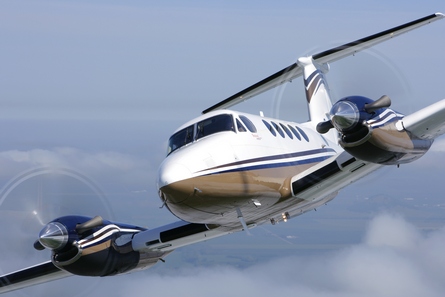Australia's Royal Flying Doctor Service has put into service its first Beechcraft King Air B200C featuring a new modular interior that it says makes the aircraft the most advanced "flying intensive care unit" operating in Australia.
The new interior, which will be fitted to all the service's aircraft on order, was designed by Australian company Total Aerospace Solutions (TAS). Instead of fixing equipment directly to the body of the aircraft, most of the essential emergency equipment in the new design is installed in a separate module.
 |
|---|
© Hawker Beechcraft |
The B200C is the first Flying Doctor aircraft to have a hydraulically operated cargo door, rather than a manually operated one. The new stretcher lifter has increased load bearing capability and provides a stable patient loading platform, says the Royal Flying Doctor Service. In addition, new stretcher litters have been designed for greater flexibility to respond to different situations, including transporting a patient to the aircraft from an inaccessible location in the back of a utility vehicle. The interior features improved seats, while stretcher pods can be easily converted to additional sideways-facing seats. Intercom facilities built into the medical attendant's seat armrests allow them to communicate with the pilot and ground services.
The King Air was delivered to Australia last year but spent four months undergoing modifications at Hawker Pacific in Sydney, including enlarging the entry door and the installation of tracking devices, GPS navigation systems and upgraded traffic avoidance systems. This was followed by a further three-month fit out by TAS of the new aeromedical interior, including patient oxygen, power systems, stretcher loading and mounting devices.
The new interior module can be pre-manufactured, allowing aircraft to spend less time on the ground before they enter service. The interior can also be easily retrofitted at the end of the aircraft's service life, the service adds.
Modifying an aircraft for Flying Doctor service has traditionally been a long and complex process, says the service's business manager Alan Tippett. "Traditionally that work has involved significant structural changes to the airframe. This new design is far less invasive and introduces a modular design, much of which can be pre-manufactured and installed once the aircraft arrives from the factory," he says.
The new aircraft is operating with the south-east Section of the Royal Flying Doctor Service from Broken Hill in New South Wales.
Source: Flight International























